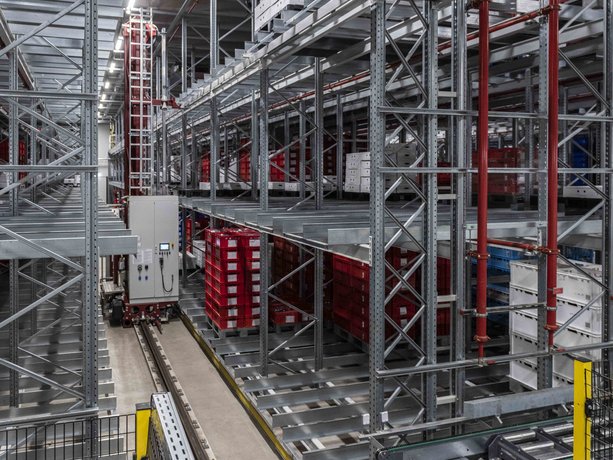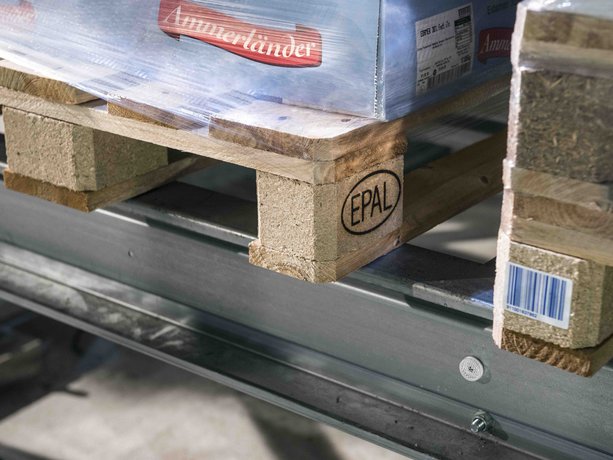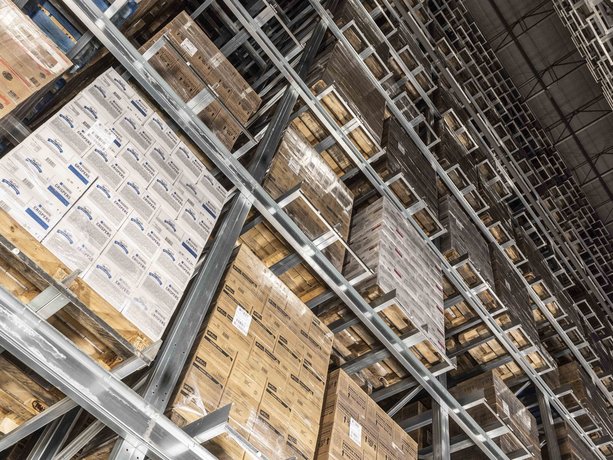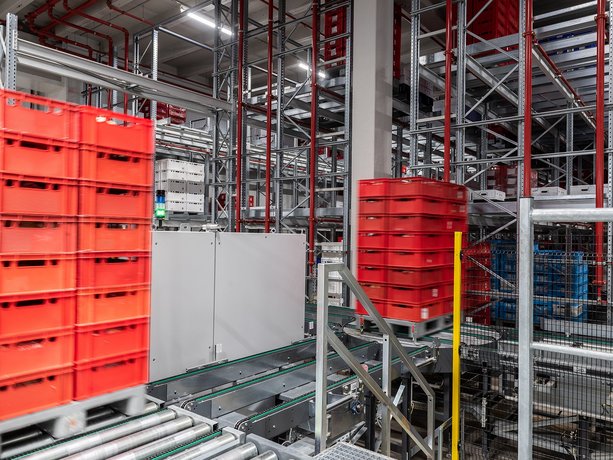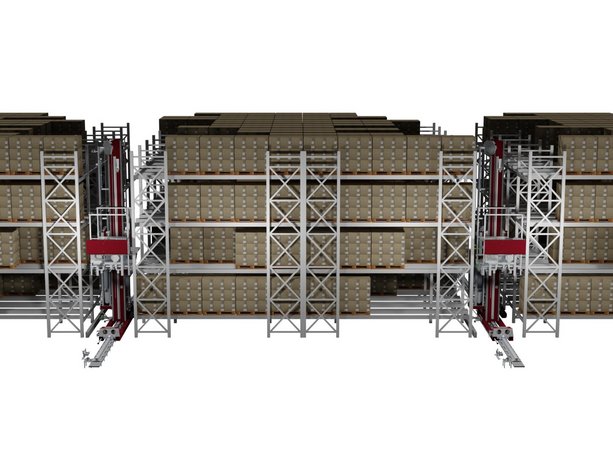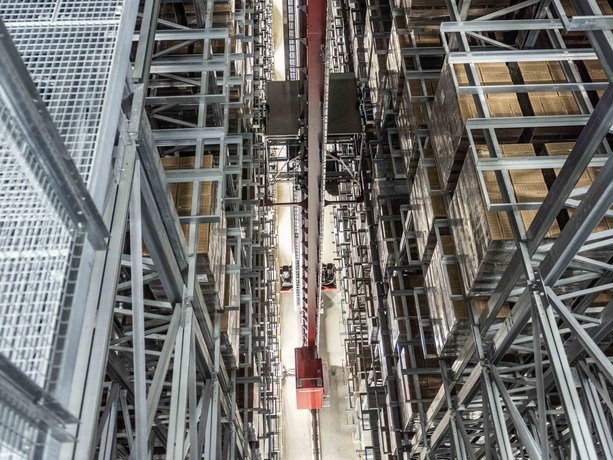5. September 2023 – Using cooling and refrigeration technology in a warehouse as effectively as possible means keeping the space to be cooled small. This works best with automated multi-deep high-density storage systems. Several loading units are stored one behind the other in deep rack channels. Such automated storage systems use the entire hall height of more than 40 meters, can be integrated into existing halls or implemented in silo construction without a separate hall.
The goods are stored more densely than in single-deep or double-deep storage systems, since the warehouse can be reduced to one aisle and one storage and retrieval machine, depending on requirements. Compared to manual warehouses, the capacity increases many times over with the same floor space. This saves expensive commercial real estate. Costs and energy consumption per parking space are reduced.
Westfalia Technologies GmbH & Co. KG, based in East Westphalia, designed its patented storage system with Satellite® for this multi-deep storage and maximum storage density. Depending on the requirements, all system components are designed for normal temperature storage, cold storage and deep-freeze storage down to -35 °C.
If necessary, several temperature zones can be integrated into one storage system. The most complex warehouse processes are concentrated and automated in the smallest of floor spaces. For example, the Tönnies maturing warehouse in Badbergen benefits from this compactness and serves as the hub of one of the most modern beef production facilities in Europe. It was integrated into a gutted existing hall.
Maximum storage capacity on minimum floor space
High-density storage systems with Satellite® achieve a floor space utilization rate of up to 95%, which also includes niches between hall trusses. They are particularly suitable for a medium range of products. The Satellite® load handling device can pick up up to three loading units and store and retrieve them on both sides of the storage aisle, but not all goods can be accessed directly at all times if the rack channel is particularly deep.
If storage aisles with particularly high access frequency are required, Westfalia alternatively uses telescopic forks as load handling devices. If, on the other hand, high capacity and increased access frequency are to be combined, additional sequencing buffers are used, which sequence goods according to route, as in the high-bay warehouses of temperature-controlled logistics provider Lineage Logistics in Lelystad and Rotterdam.
The numerous storage strategies of the logistics software Savanna.NET®, which as a warehouse execution system combines all functions for warehouse management and material flow control for maximum data transparency and warehouse control, enable a wide use of the Satellite® technology.
Material-friendly handling of large payloads
The key to efficiency is the Satellite®. This detaches itself from the storage and retrieval machine (SRM) and moves into channels of any depth, which are equipped with special storage profiles for a particularly gentle material handling. Additional support points support stressed loading aids like palettes. As a result, they can be used for longer without being damaged or causing disruptions. Depending on the version, satellites are designed for high loads, a wide variety of loading aids and formats as well as pallet-free storage.
Depending on the requirements, SRMs are equipped with one or more satellites or particularly long satellites for higher storage and retrieval performance. Depending on the SRM design, very low approach dimensions can be achieved.
Manufacturers and logistics service providers can bundle, handle or strategically store large quantities of items in a minimal floor space with an hourly throughput of hundreds of pallets for the highest possible supply chain stability. In this way, seasonal goods can be kept available until they are sold off, or more raw materials can be kept available at low prices. Statics and surfaces are ideal for solar modules.
Especially sustainable due to high energy efficiency and logistics bundling
High-density storage systems also score points in terms of energy efficiency apart from refrigeration and refrigeration technology: The system achieves a very high route efficiency through the optimal combination of storage, retrieval and rearrangement, and saves energy and service costs thanks to fewer vehicles compared to multi-aisle warehouses. Routes and forklift fleets with accident risks are reduced. These are only necessary in the feeding and loading zones, which can also be automated. Storage and retrieval machines are equipped with energy-efficient quality drives, intelligent control solutions and drive converters.
With a high level of process reliability, errors in picking and distribution are reduced. Returns and unnecessary truck kilometers decrease and improve the company's carbon footprint. The automation also relieves staff when working in extreme temperatures. A full warehouse team no longer needs to be on site to automatically provide truck tours overnight.
Storage systems with Satellite® are therefore ideal for production buffering, minimum quantity levels and strong fluctuations in demand with limited staff. They provide an important building block for the profitability and climate neutrality of companies.

![[Translate to Englisch:] Forum der Fleischwirtschaft 2023](/fileadmin/_processed_/f/1/csm_FdF_Allgemein_Social_media__Template_feb0cc6de4.png)
